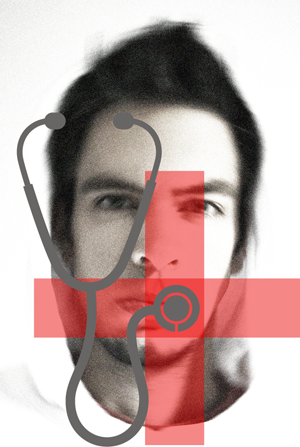 On a webinar held this week by the National Resource Center for Youth Development, M. Jane Park, Project Coordinator for the National Adolescent and Young Adult Health Information Center, discussed the state of health care access for the nation’s 18-25 year-olds.
On a webinar held this week by the National Resource Center for Youth Development, M. Jane Park, Project Coordinator for the National Adolescent and Young Adult Health Information Center, discussed the state of health care access for the nation’s 18-25 year-olds.
“Why are health and health care important for adolescents and young adults?” she asked. “[Because] the major health problems of adolescents are largely preventable.”
“Many of these issues get worse in young adulthood,” Park continued, stating that the timeframe represented the most likely point in an individuals’ life when he or she would drive while intoxicated, develop substance abuse problems or acquire sexually transmitted diseases.
In the leap from adolescence to one’s late teen years and early 20s, she said the rates of binge drinking skyrocket, with two out of five young people engaging in heavy drinking, with approximately one in seven young adults binge drinking more than five times a month. In fact, the general mortality rate among males notably increases she said, with 18-25 year old men dying at a rate of 127 per 100,000, compared to just 74 deaths per 100,000 for boys ages 12-17.
As adolescents transition into young adults, she said, managing chronic conditions, such as asthma, diabetes and mental health disorders becomes more difficult and problematic.
“Metaphorically, it’s like going off a cliff,” she said.
About 12 percent of males, and 15 percent of females, in the 18-25 demographic reported “functional limitations” which inhibit them on a daily basis, she stated. A greater emphasis on developmentally-focused health care, Park believes, could help these young people better manage their special medical needs or chronic conditions. The issue, she noted, is that while there are numerous recommended guidelines in place for adolescent health care, there is little professional focus on consensus recommendations for young adults.
“There’s no single source that is endorsed or supported by the primary care doctors,” Park said.
For many young people, health care financing systems are both hard to navigate and exclusionary. Since most medical systems emphasize acute care over chronic disease management or preventive services, she said many of the health care needs of young adults remain unmet.
“For young adults,” she added, “there’s virtually no formal clinical training focusing [on them.]”
At the root of the problem, she said, is that the health care system changes abruptly once an individual turns 18, with the alteration in legal status modifying one’s eligibility for public insurance. However, Park noted that 37 states have implemented dependent coverage plans that allow young adults to remain on their parents’ insurance plans beyond the age of 18. Even for foster care youth, Park said improvements have been made, with Medicaid coverage for the extremely vulnerable population recently raised to 21.
While people in the 18-25 demographic have the lowest general health care service utilization of any age group — with just 55 percent of young adults reporting office-based health care visits over a one year period — the same age range is the third likeliest demographic to have emergency room visits.
Far and away the most common reasons why young people forego health care visits, Park said, was due to a lack of insurance.
While full year private insurance rates for adolescents rest at about 57 percent, that number decreases to 51. 5 percent for young adults, Park said. The decrease for those with full year public insurance is even more dramatic, with the percentage dropping from 32.6 percent to just 15.2 percent. The number of uninsured triples in the transition from adolescence to early adulthood, she continued, with the rate increasing from about 11 percent to 33 percent.
In 2011, 35 percent of uninsured young people, between the ages of 19 and 29, said they could not afford to have a prescription refilled, Park stated. Furthermore, she said 40 percent of the uninsured skipped out on needed specialist care while 48 percent did not partake of recommended tests or follow-ups. Half of the population, she added, reported having a medical problem and not visiting a doctor or clinic for treatment.
An estimated 4.5 percent of adolescents in 2011, Park said, did not have “usual” sources for health care services. For young adults, the response shot up to approximately a quarter of the entire age group.
Illustration: Katy McCarthy / JJIE. (Photo courtesy vanessa_hutd / Flikr)



























